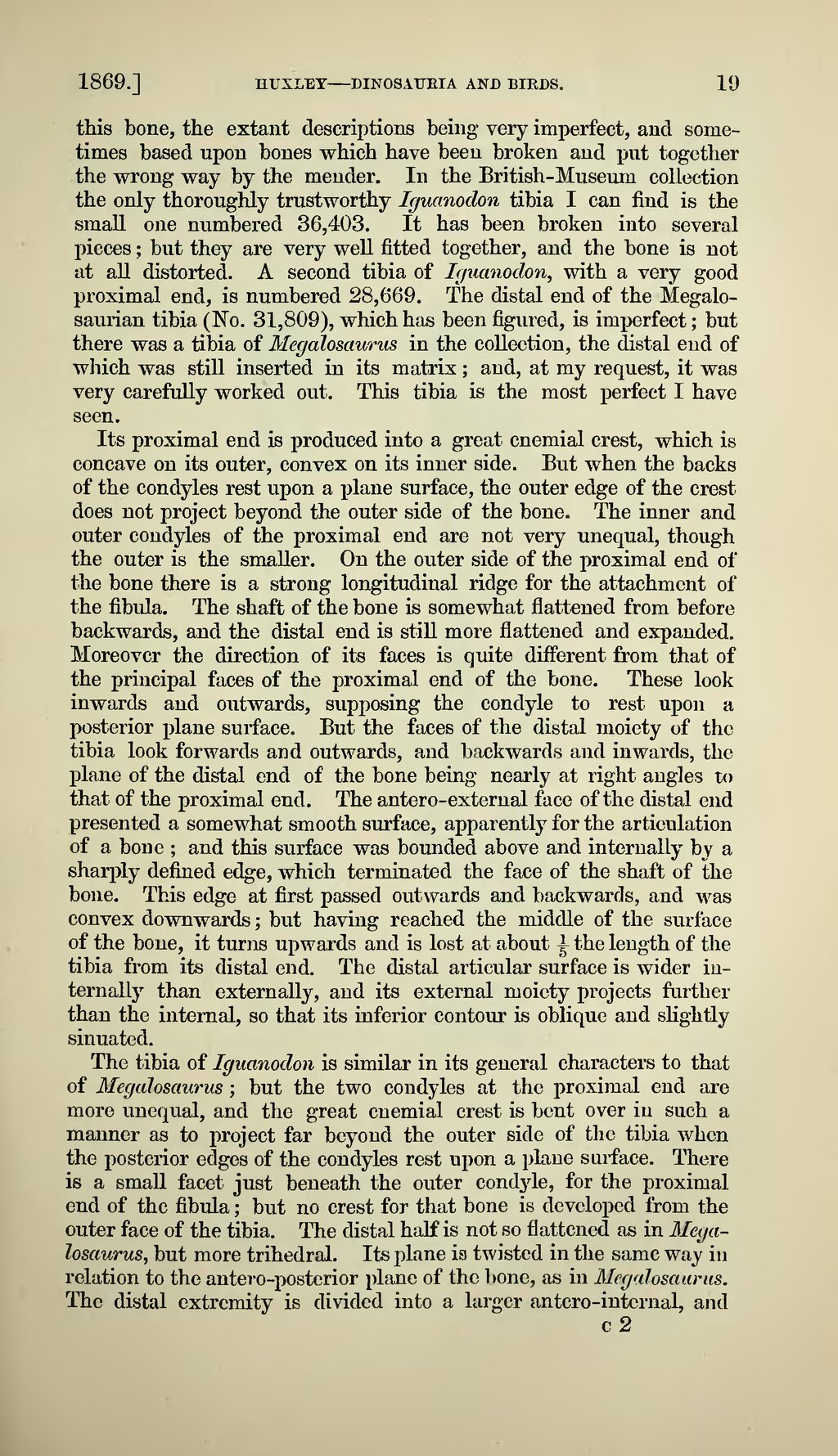this bone, the extant descriptions being very imperfect, and sometimes based upon bones which have been broken and put together the wrong way by the mender. In the British-Museum collection the only thoroughly trustworthy Iguanodon tibia I can find is the small one numbered 36,403. It has been broken into several pieces; but they are very well fitted together, and the bone is not at all distorted. A second tibia of Iguanodon, with a very good proximal end, is numbered 28,669. The distal end of the Megalosaurian tibia (No. 31,809), which has been figured, is imperfect; but there was a tibia of Megalosaurus in the collection, the distal end of which was still inserted in its matrix; and, at my request, it was very carefully worked out. This tibia is the most perfect I have seen.
Its proximal end is produced into a great cnemial crest, which is concave on its outer, convex on its inner side. But when the backs of the condyles rest upon a plane surface, the outer edge of the crest does not project beyond the outer side of the bone. The inner and outer condyles of the proximal end are not very unequal, though the outer is the smaller. On the outer side of the proximal end of the bone there is a strong longitudinal ridge for the attachment of the fibula. The shaft of the bone is somewhat flattened from before backwards, and the distal end is still more flattened and expanded. Moreover the direction of its faces is quite different from that of the principal faces of the proximal end of the bone. These look inwards and outwards, supposing the condyle to rest upon a posterior plane surface. But the faces of the distal moiety of the tibia look forwards and outwards, and backwards and inwards, the plane of the distal end of the bone being nearly at right angles to that of the proximal end. The antero-external face of the distal end presented a somewhat smooth surface, apparently for the articulation of a bone; and this surface was bounded above and internally by a sharply defined edge, which terminated the face of the shaft of the bone. This edge at first passed outwards and backwards, and was convex downwards; but having reached the middle of the surface of the bone, it turns upwards and is lost at about 15 the length of the tibia from its distal end. The distal articular surface is wider internally than externally, and its external moiety projects further than the internal, so that its inferior contour is oblique and slightly sinuated.
The tibia of Iguanodon is similar in its general characters to that of Megalosaurus; but the two condyles at the proximal end are more unequal, and the great cnemial crest is bent over in such a manner as to project far beyond the outer side of the tibia when the posterior edges of the condyles rest upon a plane surface. There is a small facet just beneath the outer condyle, for the proximal end of the fibula; but no crest for that bone is developed from the outer face of the tibia. The distal half is not so flattened as in Megalosaurus, but more trihedral. Its plane is twisted in the same way in relation to the antero-posterior plane of the bone, as in Megalosaurus. The distal extremity is divided into a larger antero-internal, and
